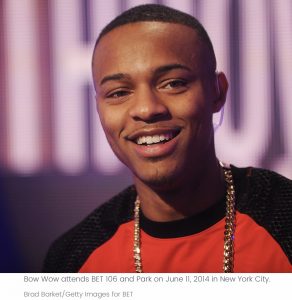US District Judge Derrick Watson halted enforcement of the travel and refugee bans less than six hours before they were due to go into effect.
BuzzFeed News Reporter
and 1 other
WASHINGTON – A federal judge in Hawaii has blocked President Trump’s second attempt at a refugee and travel executive order set to take effect after midnight.
The temporary restraining order, which applies nationwide, blocks the Trump administration from enforcing sections 2 and 6 of the new executive order — the travel and refugee portions of the order.
US District Judge Derrick Watson, who made clear from the start of oral arguments Wednesday morning in Hawaii that he was focused on the constitutional claims, found that the plaintiffs are likely to succeed on their claim that the executive order violates the Establishment Clause — because it discriminates against Muslims.
“Any reasonable, objective observer would conclude, as does the Court for purposes of the instant Motion for TRO, that the stated secular purpose of the Executive Order is, at the very least, ‘secondary to a religious objective’ of temporarily suspending the entry of Muslims,” Watson wrote in granting the TRO.
Watson noted in his order that he was not issuing a stay of the TRO, even if the Justice Department filed an emergency appeal.
The decision means that, for now, only a stay of the TRO from the US Court of Appeals for the Ninth Circuit or the US Supreme Court would allow the Trump administration to enforce the new executive order.
Three federal judges heard staggered arguments across the country — from morning arguments in Maryland to morning arguments in Hawaii to mid-day arguments in Washington state.
The order from Watson came less than six hours before the new executive order was due to go into effect.
Trump and the Justice Department — which has tried mightily to argue that the March 6 executive order addressed all of the legal concerns that had thwarted the original, Jan. 27, order — were left waiting on the three federal judges in the hours before the effective date, which Trump himself had set. The executive order, which would temporarily suspend the US refugee program and immigration from six countries, was due to take effect at 12:01 a.m. ET Thursday.
Of course, the feds weren’t the only ones waiting.
Opponents of the new executive order — most of whom maintain it remains just a further watered down version of the “Muslim ban” that Trump had promised on the campaign trail — also were waiting. Those opponents include individuals, nonprofit refugee and other advocacy organizations, about 20 state governments, several cities, technology companies, and many more who either directly challenged or have weighed in to support others’ challenges in court.
US District Judge Theodore Chuang, who went first Wednesday, didn’t rule from the bench after hearing the arguments in Maryland. He said he would try to issue an order later in the day, but wouldn’t guarantee it. Chuang didn’t signal which way he would rule, but did ask both sides to share their preferences for what he should do if he decided to block at least certain parts of the executive order.
The second hearing, before Watson in Hawaii, took place about five hours after the first ended. He also did not rule from the bench — but issued his order soon thereafter.
A third hearing began at 2 p.m. PT in Seattle before US District Judge James Robart on a motion in Ali v. Trump to temporarily halt part of the travel ban in the executive order from taking effect. He, also, did not rule from the bench, but said a written order would follow.
A fourth pending request for Robart to enforce his prior injunction — issued as to the original executive order — against the new executive order also is pending, in the case brought by the state of Washington, but no hearing has been scheduled on that request.
With no ruling from Robart on that request by noon Wednesday in Seattle, Washington filed a separate request that the judge issue a new temporary restraining order against the new executive order. After holding the hearing in the Ali case, Robart also held a last-minute hearing on the state’s request.
“Because of the grave harms the States and their residents will begin suffering at midnight tonight if Executive Order 13780 takes effect, the States ask that if this Court is going to deny or postpone ruling on the pending motion to enforce the injunction, it grant this motion for temporary restraining order,” the Washington lawyers wrote.
From the start of the arguments in Hawaii, Watson said that he was most interested in hearing about the constitutional arguments — whether the executive order discriminates against Muslims in violation of the Establishment Clause of the First Amendment.
Colleen Roh Sinzdak, one of the Hogan Lovells lawyers representing the challengers, argued remotely from Washington, DC, and said there were several ways the order was discriminatory, including the fact that it targeted Muslim-majority countries and the negative portrayal of Islam.
Acting Solicitor General Jeffrey Wall, who also argued remotely after appearing in court in Maryland earlier in the day, said that the harms laid out by the challengers, such as the denial of a visa, were speculative. He also said that foreign nationals overseas didn’t have due process rights, so there couldn’t be any due process violation.
Hawaii’s lawyers had argued that the state had standing to sue because the executive order affected enrollment, recruitment, and academic activities at state universities. It’s a similar argument that Washington state raised in the earlier case that resulted in an injunction, and Hawaii’s lawyers invoked the Washington case on Wednesday to back up their standing argument.
When the ruling came down, Watson found that Hawaii — as well as the individual plaintiff, Dr. Ismail Elshikh — had standing to bring their claims.
The challengers in Maryland — individual visa holders who say they’ve experienced stigma from the president’s actions and would be separated from family trying to travel to the US once the order takes effect, as well as nonprofits that work with refugees — want a nationwide injunction stopping the order from taking effect in its entirety.
A lawyer for the government disputed that any emergency action was needed, but said that if the judge did enter an order, it should be narrow and limited to the individual plaintiffs and certain clients of the nonprofits that sued.
Acting Solicitor General Jeffrey Wall argued that the new executive order “directly, serially” addressed concerns that the US Court of Appeals for the Ninth Circuit had expressed about the first version of the travel ban. He said the latest order made clear that lawful permanent residents and current visa-holders wouldn’t be affected, removed a section focusing on Syrian refugees, and also took out a provision that would have prioritized religious minorities once the refugee program resumed. Critics charged that the religious minorities section was aimed at putting Muslim refugees at a disadvantage.
Chuang asked if the changes in the second order were more about addressing due process issues raised the first time around how the president’s order would affect visa holders and applicants, as opposed to broader claims that the order violated the First Amendment’s Establishment Clause by discriminating against Muslims.
The order draws no religious distinctions on its face, Wall replied, and any allegation that the order nevertheless disparately affected Muslims wasn’t a legal argument that the court could consider.
Chuang asked both sides about what he should do with Trump’s remarks during the presidential campaign advocating for a ban on Muslim immigration. Omar Jadwat, the director of the ACLU Immigrants’ Rights Project, said the court should consider whatever information a reasonable person would find relevant in exploring the government’s purpose in adopting the travel restrictions. That included comments by Trump and his advisers about a Muslim ban, Jadwat said.
“The government never disputes that if you take all of the publicly available evidence together, it shows that purpose,” Jadwat said. “Instead, it’s asking the court to turn a blind eye to much of the evidence that is apparent to everybody.”
Wall countered that Trump’s statements as a candidate, as opposed to an elected official with the benefit of guidance from agency officials, were less relevant than what he’d said and done after taking office. The campaign comments were even less on point in looking at the second order, which was drafted in response to concerns raised by judges who looked at the first order, Wall said.
The Maryland case was first filed in early February in response to Trump’s original executive order, after a federal judge in Seattle had already issued a nationwide injunction in early February.
Facing unfavorable rulings in several federal courts, Trump on March 6 signed a new executive order that would rescind the earlier order and replace it. The latest version would temporarily halt immigration from Iran, Libya, Somalia, Sudan, Syria, and Yemen (Iraq was removed from the list) for 90 days, but exempts current visa-holders and makes clear that exceptions would be considered.
The new order again would suspend the US refugee program for 120 days – refugees already scheduled to come to the US by March 15 wouldn’t be affected – and cut the number of refugees who would be allowed in by more than half, from 110,000 to 50,000. In addition to removing the indefinite halt on Syrian refugees, the new order also removes the section prioritizing claims from religious minorities once the program resumed.
During arguments on Wednesday, Chuang asked another lawyer for the government, Arjun Garg, if the president could set the maximum number of refugees allowed in at zero and still be in compliance with the federal Refugee Act. Garg said that he could, if the president determined that allowing refugees in would be harmful to US interests.
Unlike the January order, the new one was announced 10 days before it would take effect, giving agencies and travelers more time to prepare. There was chaos at airports nationwide in the hours and days after Trump issued his January order, which had taken effect immediately when Trump signed it.
Challengers Will Try To Stop Trump’s New Travel Order This Week Before It Even Takes Effect
Find background here on the challenges to the new executive order.
Trump Administration Readies For A Day Of Fighting To Defend The New Travel Order In Court
Find legal documents here in the four pending requests for orders halting enforcement of the new executive order at BuzzFeed News.



